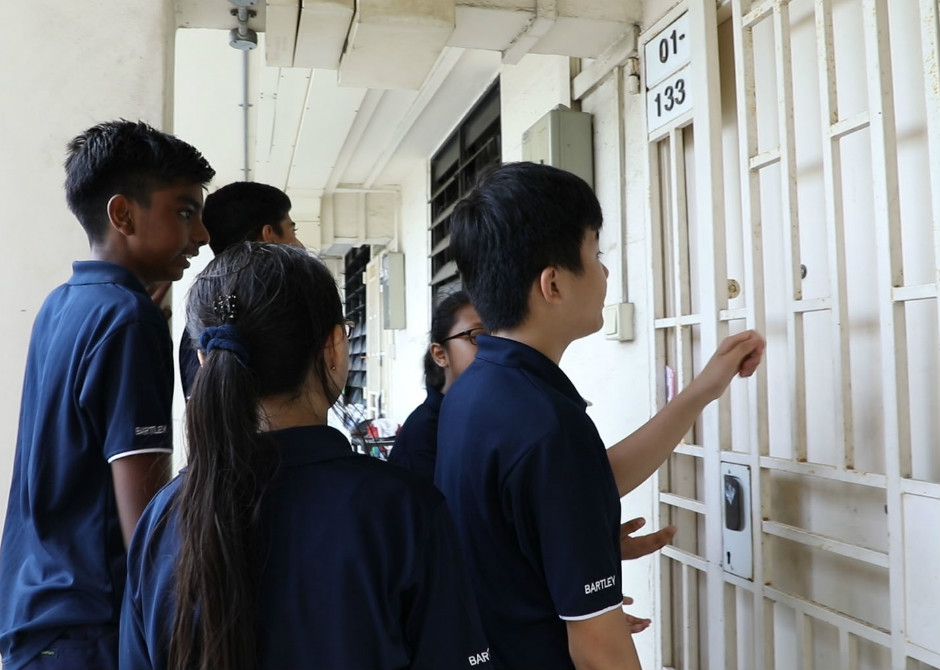In a world where concrete jungles often overshadow the wonders of the natural world, Geography teacher Mdm Norlinda Ishnin has made it her mission to awaken the spirit of adventure and ignite a deep love for nature in the hearts of her students.
As a child, Mdm Ishnin would be riddled with mosquito bites from countless hours spent exploring the wilds of her kampung. It got so bad that her mother would ‘quarantine’ her at home until the swells on her legs, hands, and face subsided.
It was worth it, says the Dunman Secondary School teacher, considering the fun she had searching for spiders, frogs, and other fauna. The sights, sounds, and scents of the natural world sowed the seeds for Mdm Ishnin’s enthusiasm for the environment to blossom.
Unsurprisingly, she pursued Geography as her major in university, and a fieldwork experience in a secondary forest collecting data on vegetation adaptations solidified her interest. “It had rained prior to the fieldwork activity, and the earthy aroma of rain that permeated the forest floor was the distinctive scent that I would later come to know as petrichor,” she recalls.
This inherent interest in nature, coupled with her knack for educating young minds as a relief teacher during her university days, led her on the path to becoming an educator with a green agenda.
“I want students to understand how their decisions and actions affect the environment,” she says.
Learning through the unfamiliar

In 1994, Mdm Ishnin (pictured front row, standing, first from the right) accompanied her pioneering group of Geography students to a traditional Iban longhouse, nestled along the Skrang River.
In the mid-1990s, Mdm Ishnin became a full-time Geography teacher at Henderson Secondary School, and wasted no time in organising field trips to nature reserves like Bukit Timah and Sungei Buloh Wetland. “It is a fun way to learn about the world outside of school,” she says.
Open to all students, Mdm Ishnin would go the extra mile to ensure these field trips offered more than just a Geography lesson. “I made it a point to incorporate elements of history along with a strong focus on environmental education and personal values,” she explains. This, she says, provided a well-rounded learning experience that was fun for all.
Furthermore, when organising field trips overseas, Mdm Ishnin would look out for students who needed extra financial help to fund their travels.
One of these expeditions took them to Sarawak, Malaysia.
On a boat ride on the Skrang River, the students learnt about the significance of rivers as the primary mode of transportation for the Iban tribe. They also gained knowledge about how meandering rivers are formed. When the boat got stuck because the water level was low, the students helped to lift it to deeper parts of the river where there was enough water to move the boat. “This experience also taught them to appreciate the comforts they have back home,” says Mdm Ishnin.
She herself took home valuable lessons from such field trips, she says.
In Chiang Mai, Thailand, she and 10 students had cooked fried rice for the school children of the Karen Hill Tribe as part of the programme. “Despite it being soggy, the children did not waste a grain,” she recalls. This served as a reminder for her to be thankful, a value that she hoped to instil in her students.
In the spirit of being thankful, she is quick to attribute the success of these field trips to her fellow colleagues within the Humanities department, who shared her enthusiasm for accompanying a lively cohort of students abroad in the name of anthropological insight and personal growth.
Investigating the case for conservation

The students of the Info.Media Club CCA at Henderson Secondary School ventured deep into the grounds of Bukit Brown Cemetery to bring their video project to life.
Mdm Ishnin spread the green message even as teacher-in-charge of the school’s Info.Media Club Co-Curricular (CCA).
She assigned her students the task of scripting and producing videos that would raise awareness about conservation efforts in Singapore.
One such video project featured Bukit Brown Cemetery and the royal burial grounds in Kampung Glam. The students were tasked with identifying reliable sources to interview. To overcome this, Mdm Ishnin suggested reaching out to the Nature Society Singapore.
“Seeing the final result of their hard work inspired a Secondary 1 student to take H2 Geography in junior college,” says Mdm Ishnin happily. “Before this, she wasn’t interested to do so even at upper secondary level.”
In another project, this time to Chek Jawa, students got to walk on the mudflats, collect litter, sort it out and weigh it. The students then used the data collected to educate others about the importance of maintaining the health of our ecological habitats. This data also informs governmental and international organisations about ways to reduce debris in waterways so that animals and plants thrive.
She sees a world worth observing
 A student’s nature journal brimming with observations and discoveries made during the Sensory Skills Programme.
A student’s nature journal brimming with observations and discoveries made during the Sensory Skills Programme.
Now a teacher at Dunman Secondary School, Mdm Ishnin introduced the Sensory Skills Programme (SSP), a special interest group open to all Secondary 1 students, which attracts around eight to 15 keen naturalists annually.
The programme’s bird-watching focus tells of Mdm Ishnin’s personal interest in birds. The students would monitor the urban biodiversity regularly around their school, specifically different bird species.
Nearly every other week, students take morning walks along paths recommended by a Nature Society (Singapore) officer from its citizen science project group Every Singaporean A Naturalist (NSS-ESN). As they walk, they spot their feathered friends. With the help of binoculars and NSS-ESN identifier cards, the students and teacher mentor identify the species, record their observations and upload the data to iNaturalist, an online social network and database for identifying photos of plants and animals.
As teacher-in-charge of Dunman Secondary’s Green Club CCA, she encourages her students to keep a nature journal to deepen their understanding of the biodiversity found in the school. The students spend time observing, taking notes or sketching what they see.They ask questions and make connections. Mdm Ishnin explains, “When we write about or draw our observations, we connect with nature in a creative and intellectual way through storytelling”.
One of her Secondary 3 students now takes to birdwatching on her holidays – just one of the reasons Mdm Ishnin pushes on with these green efforts; she hopes more students will utilise the knowledge and skills gained from these activities to question the world around them.
Taking her eco-friendly message beyond school

As a volunteer, Mdm Ishnin leads children on yearly explorations to parks like the Singapore Botanic Gardens.
As a volunteer at PPIS: Women Association in Singapore, a non-profit organisation focused on women empowerment, Mdm Ishnin organises activities for the children at PPIS’s after-school care programme at least once a year.
Along with like-minded friends, she plans nature journalling excursions to places like Pasir Ris Park and teaches the children how to build terrariums from recycled bottles.
Recently, she and her fellow NSS-ESN volunteers successfully conducted their maiden nature journalling workshop for teachers, aimed at inspiring them to leverage this practice as a teaching tool.
Her efforts aim to instil a sense of responsibility and respect for the planet.
“I don’t see myself as an advocate, but merely someone who shares her appreciation for the environment.”





.jpg)
